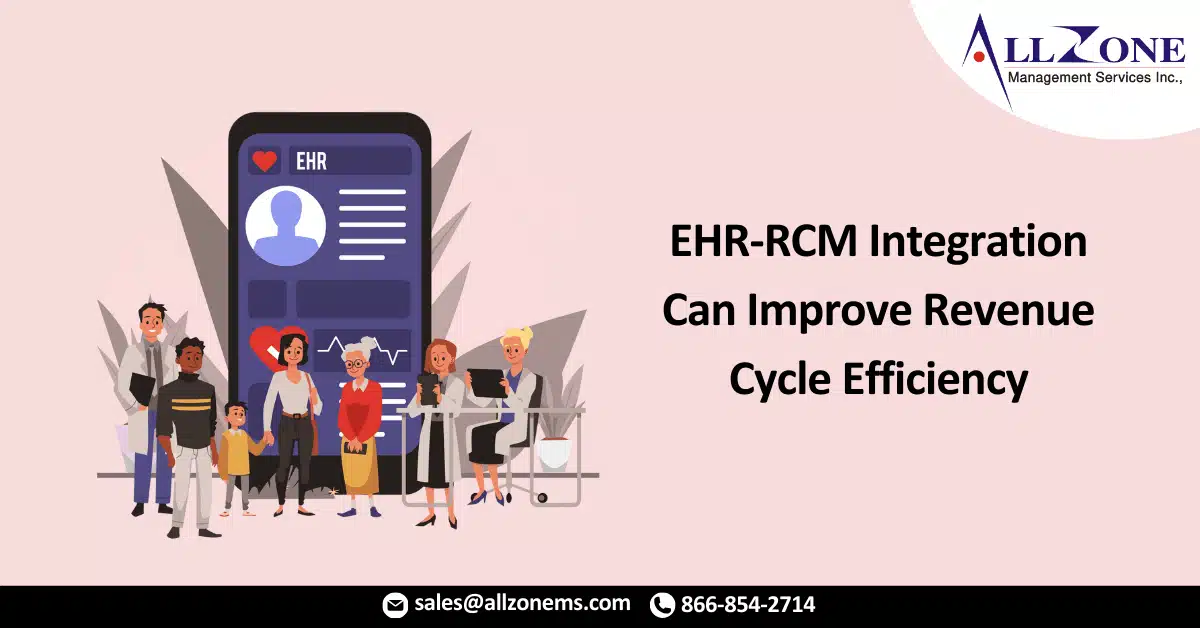Partnering with a vendor that provides EHR and RCM capabilities helped one healthcare organization boost communication and improve revenue cycle efficiency for 150 care centers.
Leveraging automation for revenue cycle management (RCM) processes can streamline tasks and improve efficiencies. Specifically, partnering with an EHR vendor helped a healthcare organization to achieve $1 billion in patient collections in three years.
The healthcare organization made the switch to an EHR vendor in June 2019, signaling the start of their EHR and RCM integration, vice president of RCM at the healthcare organization told.
“Partnering with the EHR vendor and being able to grow as easily as we have been within that infrastructure has allowed us to get to that one-billion-dollar collections mark. We are not leaving money on the table because we have a 99 percent net collection percentage, which is above the industry averages and norms,” he shared.
“It’s really because of the work that the software company’s RCM team does, and the collaboration that we have working together helped us achieve that number.”
The partnership has helped the healthcare organization with EHR responsibilities, including scheduling patients, providing care, and documenting care, along with day-to-day backend RCM tasks, such as claim submissions, denials, appeals, and cash collections.
“Having this sort of arrangement has allowed us to grow and be more scalable while we can keep a smaller in-house team,” an expert said.
The healthcare organization has around 150 care centers located across New Jersey and Pennsylvania, is 20 percent bigger than it was at the start of the COVID-19 pandemic.
Healthcare organizations must determine the capabilities that are most important to them when selecting a vendor for RCM automation. For example, the healthcare organization prioritized cost-effectiveness and claim detail visibility.
“There’s very detailed reporting that we can get from the enterprise level. I can look at things across the board for every care center, for every claim, for every CPT, or I can narrow it down to one care center, or one provider, and see what’s going on there,” the expert explained.
“We needed to have that level of clarity, and the EHR vendor kind of gave us a peek behind the curtain, and what their dashboards looked like, what the reports looked like, and how it was going to best meet our needs, and it did.”
Another critical aspect of the collaboration is the communication between the healthcare organization team and the EHR vendor account managers for revenue cycle (AMRCs).
Every care center has an AMRC that manages questions about claims, processes, or workflows. There is also an AMRC at the corporate level. Open communication and feedback exchanges between AMRCs and the healthcare organization have led to efficiency improvements, according to the expert. In addition, the organization can promptly address denials and rejections by communicating with specific care centers experiencing issues.
Regular training sessions also provide an opportunity for the healthcare company’s in-house RCM team and the EHR vendor’s RCM team to discuss issues, trends, and potential solutions to increase revenue and streamline processes.
The partnership has allowed the healthcare organization to develop new tools and offerings.
“One of the things we’re in the process of rolling out and implementing now is our electronic statements—so email statements and text statements out to patients—to get that outstanding balance in front of them in a more convenient manner,” the expert noted.
“We think that’s going to have a huge impact on, not just cash collections, but the timing of cash flow, and the decrease in overall AR, which will hopefully decrease what we have to turn over to collection agencies.”
Outside the RCM scope, the vendor has also been developing solutions to facilitate mobile check-in, e-signatures, and completing consent forms before appointments.
Going forward, the healthcare organization is focused on its e-statement rollout, data optimization, and streamlining patients’ responsibilities at check-in, the expert shared.
When transitioning to the EHR vendor, the group practice was switching from a different management company, meaning that all care centers had to implement the EHR vendor solutions simultaneously.
As a result, the partnership helped the healthcare organization realize the benefits of rolling out solutions in phases and piloting programs with live data.
For other healthcare organizations looking to improve RCM, considering all potential new opportunities is key, the expert said.
“There are times [when] you can feel like you’re being overwhelmed with different sales pitches and things that are coming in, but sometimes there’s that needle in the haystack that might be something that could help you out., It’s not necessarily just with the EMR, but it could be something else that might help you, or at least gives you those ideas,” the expert pointed out.
“Never just brush off a potential new idea and always be open-minded about it. Know that some of it might not be something that works for you, but if you find one thing that works great and is going to positively impact 150 care centers and their employees, providers, and patients at every single one of those care centers, it’s worth the time and effort into investigating and doing your due diligence. If it comes down to it, doing a long-termed implementation to get something in place could be a great option because you know that down the line, it’s going to improve how everything runs,” the expert concluded.
For More Information: how ehr rcm integration can improve revenue cycle efficiency

